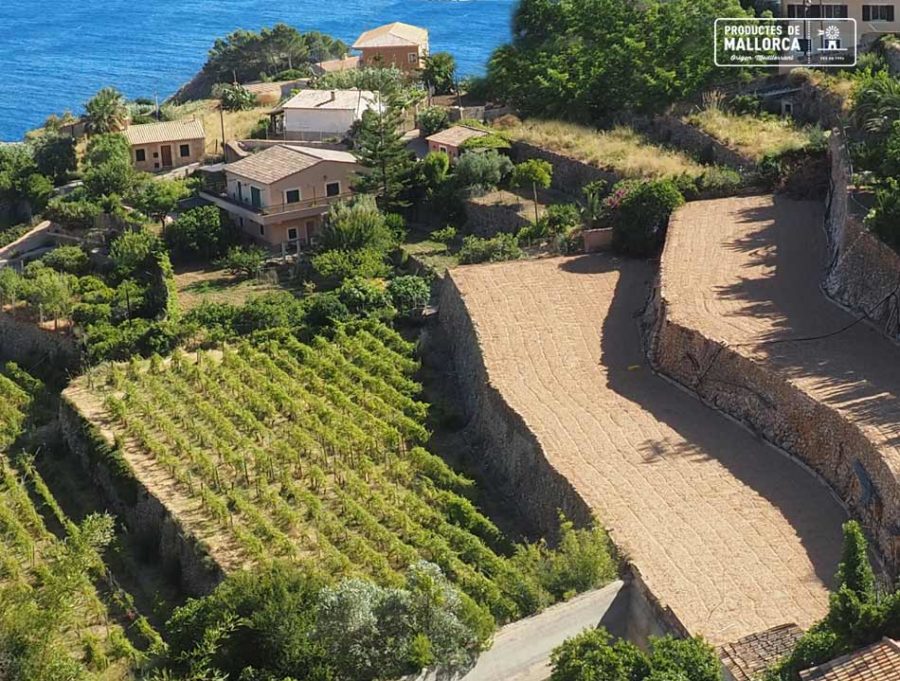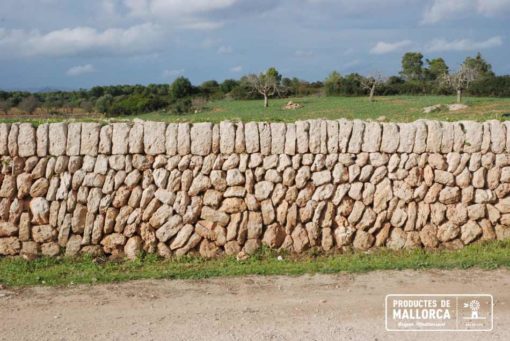
Dry wall in Mallorca
To us Mallorcans it seems the most normal thing in the world, because we have seen it all our lives. But there is one thing that surprises many of those who come to Mallorca for the first time, and especially if they visit the Serra de Tramuntana. I mean those long stone walls, made in the middle of the mountain, no matter how steep the slope is. These are the marges, made by some specialists, the margers with their dry wall technique in Mallorca.
Banyalbufar
This beautiful village, with only 515 registered inhabitants, is located in the Serra de Tramuntana, on a very rugged coast but with spectacular sea views.
Traditionally, Banyalbufar has stood out for 3 things: A/ Branch tomatoes (tomate de ramellet), ideal for preparing a good Pa amb Oli. B/ Malvasia and the delicious wines made from this type of grape. C/ And the dry walls or marges, without which it would be impossible to grow the two products mentioned above in Banyalbufar
The arrival to Banyalbufar is always something that impresses, either by the Ma.10 road that joins it with Estellencs on one side or Esporlas on the other, or by the sea. The impression is always the same, the spectacularity of a huge hillside, with a steep slope covered with houses and embankments made of stone and earth.
All these embankments were made to be able to take advantage of the land, to be able to cultivate and to be able to subsist in a wild and difficult nature. Today it is one of the most beautiful images for any visitor to Mallorca.
Margers
The margers are the specialists in making these dry stone walls, the marges. This type of wall was made basically for two reasons: to mark the limits of the properties and, in the mountains, to make terraces that could be cultivated.
Their main tools are the picassó gros and the picassa and some special hammers with which they hit and break the stones, to give them the shape and size you want. It is a very physical and hard work, not suitable for anyone because for hours you have to be outdoors, lifting weights, being cold in winter and very hot in summer.
Obviously in certain villages, because of their orography, like Banyalbufar, Bunyola or also Sóller it is easier to find the best professionals.

The technique of marge or dry wall in Mallorca
On any farm, in order to cultivate, the main thing was to remove the stones. Not only the ones that were loose but also those rooted in the ground. For this they used dynamite or lime cartridges, which made the stone explode.
Once this had been achieved, these boulders had to be used in one way or another, and the most practical way was to make boundary walls or terraces for cultivation.
The first thing to do was to clean the floor well and make a bed for the wall. This must be, at least, 1 inch deep and called s’escombra. There, the largest stones are placed as a base, which will be the assentament. A long and tight string, the ginyola, will mark the line to follow so that the wall is not twisted. Then a stone is placed, which has to act as a cornerstone, is the pedra mestra and about 3 / 4 meters is placed another large stone, well aligned and that has to serve as a reference. The space between these two is covered with more stones, adjusting them well to each other and to the ginyola.
The other side of the wall is made the same and the gap between the two is filled with smaller stones, but always without mortar. This is done in sections and up to the height you like. Finally, the last row of stones is chosen very well and adjusted as best as possible, to give it the top finish, which will be called a corona.
Measures and advantages of marge
Once finished, the wall or marge is usually about 0.80 meters wide and 1.50 meters high, although some can be much higher.
The advantages of making marges are many, clean the land, delimit the farms or get new terraces for cultivation. And one very important thing, as there is no mortar or cement, there are holes that allow water to filter out and retain the soil when it rains heavily.
Traditionally, dry walls were made mainly for practical, rather than aesthetic, reasons. Nowadays things have changed a bit, and many people like to have some marge in their country houses. This gives it a more rustic and very typical Mallorcan touch.
The dry wall in Mallorca is considered an emblematic piece of our landscape. The llaut, the most typical boat of our islands, achieves the same effect on our coasts. Follow the link to learn something about this nice boat, so appropriate to the type of navigation in the Mediterranean: The llaut
